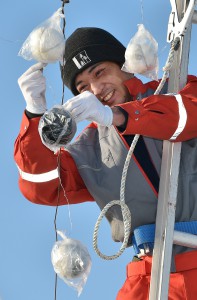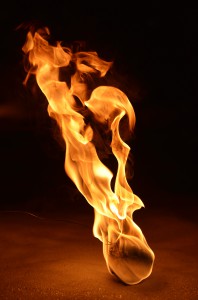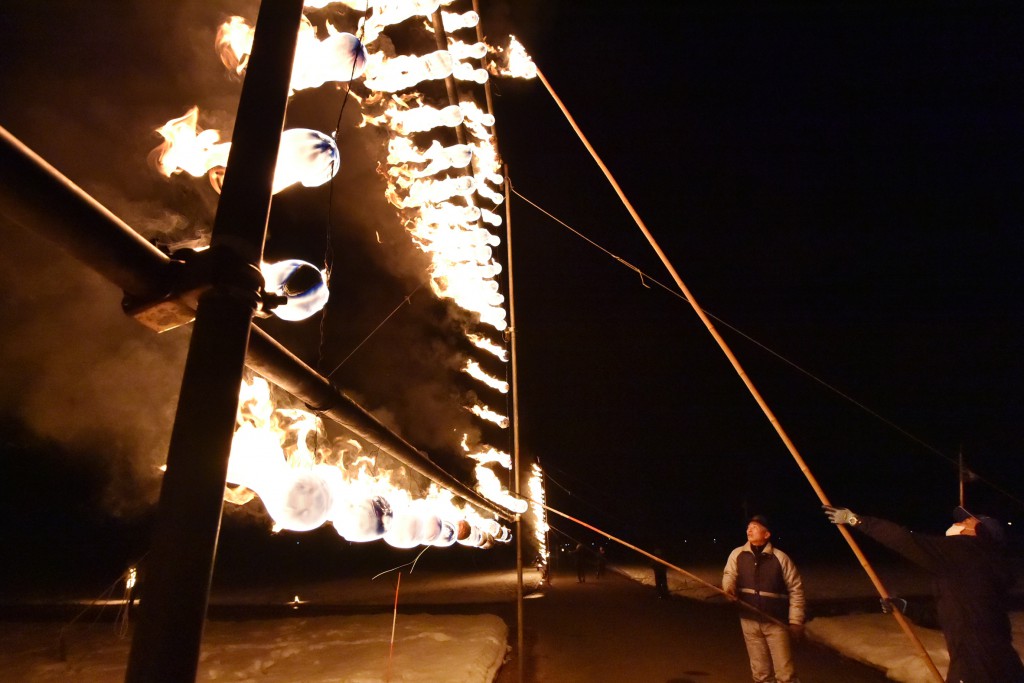
Matobi bonfires turning Koani River red in Kosawada community (in Kamikoani Village, Akita Prefecture)
-Lightings to welcome spring and ancestors’ souls (Kamikoani Village, Akita Prefecture)-
Kotaro Yamada
On the Spring Equinox Day, great big Chinese characters are lit up on fire in the villages alongside the Koani River in the northern part of Akita Prefecture. The seven-day period starting three days before Spring Equinox Day and ending three days after is called “higan”, which is a time when people in Japan pay their respects to ancestors. These special bonfires are called “matobi”, which literally means “10,000 bonfires,” and placed on the night of the spring equinox to entertain ancestors’ souls. This unique festival is held in Kamikoani and other villages in Akita Prefecture as a traditional event also to celebrate the end of long winter and the start of spring.
At around 7:30 in the late afternoon on March 21, the great big bright characters appeared in the darkness in the community of Kosawada in the Kamikoani Village. The flame of matobi was reflected on the water and lingering snow, turning the river and riverbank ruby red for about 20 minutes.
The fires are lit on “dampos” which are balls made of long pieces of cloths hand-rolled by local villagers. The balles are soaked in heating oil and then tightened on steel frames which are arranged into all different shapes. Each community displays its own matobi on the riverside, on the mountain, or in the rice paddies. The characters they chose are normally related to higan tradition or names of each community and can be as large as six meters in width.
The tradition is observed at approximately 30 communities in the Kamikoani village and the Aigawa Area of Kitaakita City. In 2005, the festival was designated as an important intangible folk culture asset by the Agency for Cultural Affairs of Japan for its uniqueness.
Villagers of the communities do their best to make the fires as beautiful as possible so that their ancestors can find their way home easily. The community of Daikai in the Kamikoani Village put their matobi fires in the rice paddies. This year, it placed 400 dampos on the snowy ground to send out a message that stretches out for more than 800 meters.
Shunichi Shimizu, a 72-year-old resident of the community, said, “Red bonfires look so beautiful on white snowy ground. I hope this tradition will last for ever.”






